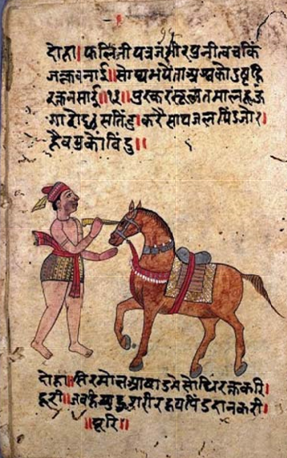Talk:Early Veterinary Practices in Ancient Bhārata
By Vishal Agarwal
The Vedic civilization was among the earliest in the world to domesticate and care for animals. Archaeological discoveries from the Sarasvatī–Sindhu civilization (also called the Harappan culture, though often misnamed as the Indus Valley Civilization) include seals depicting ornamented elephants, suggesting their participation in ceremonial processions.
An intriguing discovery linking India to distant lands is an ancient manual on chariot racing found in Syria, dating to before 1500 BCE. Remarkably, several technical terms used in this text are of Sanskrit origin, indicating the wide influence of early Indian knowledge systems.
Foreign travelers who visited India more than a thousand years ago recorded that Hindus, Jains, and Buddhists had established hospitals not only for humans but also for animals, an early testament to India’s compassionate medical tradition.
Ancient India had at least five comprehensive manuals on horses, describing their breeds, diet, and methods of treatment for various ailments. One such text is attributed to Nakula, one of the Pāṇḍava brothers. Surviving manuscripts even illustrate procedures such as eye surgery performed on horses.
Another noted veterinarian, Śālihoṭra, authored multiple works on equine medicine, which were later translated into Arabic, Persian, and Tibetan, spreading India’s veterinary science far beyond its borders.
In eastern India, a sage named Pālākāpyā, who lived in Assam, composed the Gajāyurveda, a detailed treatise on the care and treatment of elephants. This work stood unparalleled in the world until the nineteenth century. Even today, traditional scholars and veterinarians in Kerala continue to consult the Gajāyurveda for the treatment of elephants, preserving one of the most sophisticated branches of ancient Indian veterinary science.

